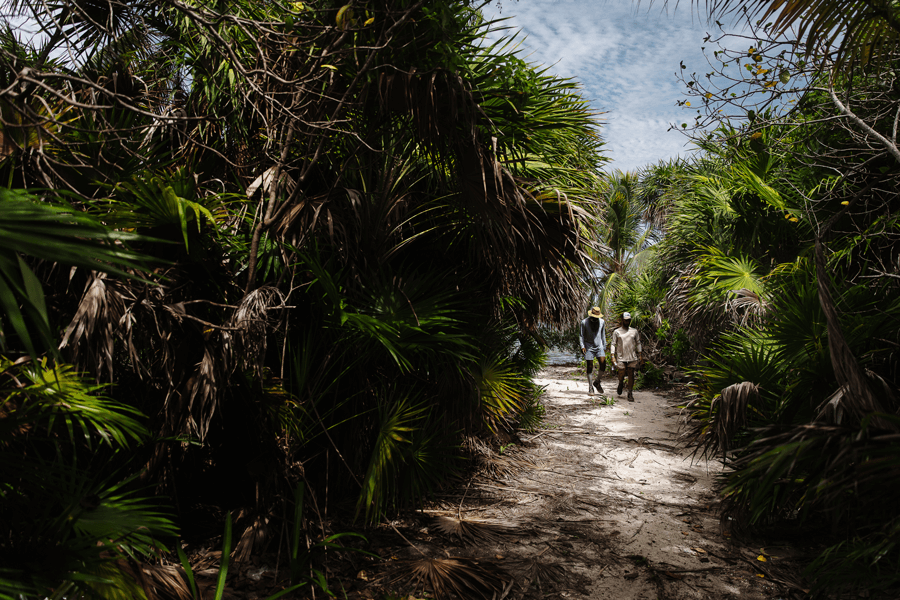FLY FISHING FOR BONEFISH (AND PERMIT) IN THE YUCATAN
While traveling, few things inspire more panic than sitting at the luggage carousel watching bags pass, none of them yours. The feeling is much worse when said bag contains every rod and reel needed for a week-long fishing trip abroad. Jealousy and rage set in as you watch others grab their belongings and start their sure-to-be-awesome adventure. This would be the beginning of ours.
We’re the So Fly crew, a team of fly fishing podcasters and content creators. We made our way from Toronto to the Yucatán to fish the Sian Ka’an. This is our most exotic trip to date and our first as a team to the tropics—one we accomplished mostly DIY. Mostly DIY. If we hadn’t immediately lost our rod bag upon arrival, it would have been totally DIY.
We called the guide we’d be meeting to break the news to him. Although we’d be going it alone for most of the week, we were lucky enough to come into contact with Rhett Schober (mexicoflyfishing.com), who was going to take us out on our first day of fishing. Rhett was a contributing author to Rod Hamilton’s book Fly Fishing the Yucatán, and he’s been exploring, living in, and fishing the Yucatán since the 1980s. We had been corresponding for months and were eager to meet and fish with Rhett, so this wrench had us concerned we may miss our chance.
“Oh, hey man, you’re not the first and definitely won’t be the last. Don’t worry, I’ve got rods and reels—we’re still on, brother!”
Instantly, Rhett put our anxiety to rest, and the stoke levels began to rise. The airport beers also helped. We left the Cancun airport to go pick up our rental car. Anyone hoping to fish the Yucatán, especially if you’re a Canadian, will most likely be flying into Cancun. Our base camp, so to speak, was to be Tulum, which is an easy enough drive south along the coast.
A wall of humidity and heat met us as we picked up the car. October is the rainy season, but as rain usually goes in the tropics, it lasts for a very short time and gives way to brilliant sunshine. We made the roughly two-hour drive to our Airbnb (casaflamingotulum.com), a wicked three-bedroom oasis in town with a massive pool and ample fridge space for the Tecate. We decided to stay in the more bohemian vacation town of Tulum because of its proximity to the fishing as well as its amenities like grocery stores, banks, wicked taquerias, and a little bit of nightlife.
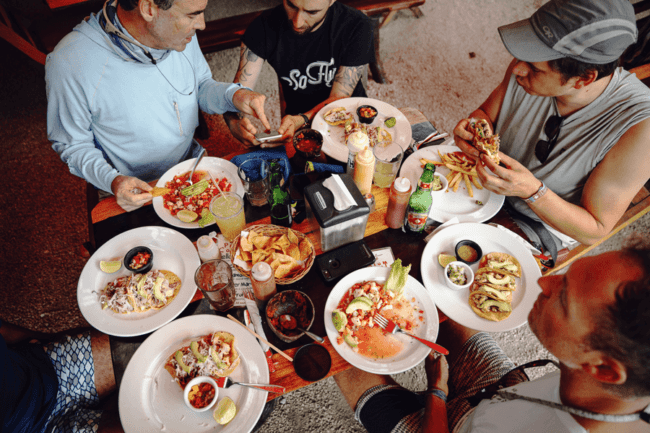
So things were looking better. The place was amazing, the beers were cold, the sun was shining, and although we didn’t have our own rods and reels, we did have all of our terminal tackle, flies, clothing, and boots. We were just getting settled when we got a message from Rhett. He was in town and wanted to make a plan for tomorrow. We hopped in the car and headed out to meet him in the parking lot at the Chedraui, which can be best described as a Mexican Walmart.
There are so many reasons to love fly fishing and travel. One of our favorite things is getting the opportunity to meet new people and personalities. We pulled up beside Rhett’s SUV and saw an already-grinning man, eager to meet. What a great first impression. Rhett is a larger-than-life personality. He met us with open arms, smiles, laughs, and love. We immediately felt comfortable and excited to be spending time with the man on his water.
“You call that a cooler? How many beers do you expect to fit in that little thing?” said Rhett.
We had been instructed to fly down with a soft-sided cooler, an essential piece of equipment we’d later find out. Obviously, ours didn’t quite meet the standard, but guides are usually a prepared bunch, and he said not to worry because he had two sizable coolers perfect for sandwiches and cervezas. We made a plan to meet early the following morning and make the drive into the Sian Ka’an.
The Sian Ka’an is a biosphere reserve located roughly 30 kilometers (18 miles) south of Tulum. Founded in 1986, it became a UNESCO World Heritage Site the following year. It is located on the east coast of the Yucatán peninsula and spans roughly 2,800 square kilometers (about 1,100 square miles). In it you can find freshwater cenotes (natural swimming holes), lagoons, wildlife, expansive flats, beaches, and fish. Most famously for fly anglers, the town of Punta Allen is located in the Sian Ka’an. This is where some of the more notable lodges, like Pesca Maya, are based. Although some of those lodges offer daily guided boat outings, we were sticking to our plan of discovering the Sian Ka’an on foot with Rhett’s help.
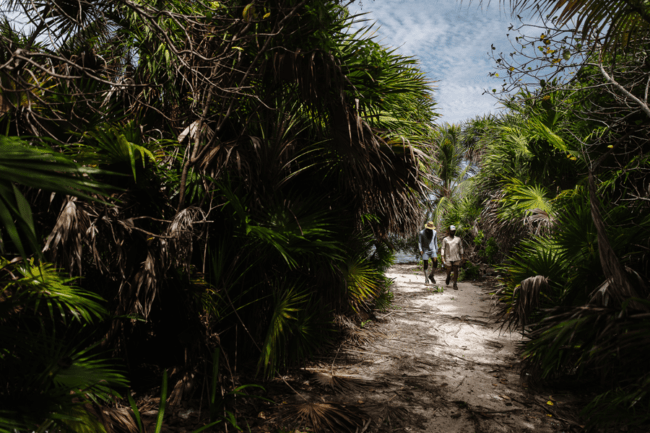
We’d be meeting Rhett and fishing the beachside cut at Boca Paila in the Sian Ka’an. Rhett had us prepare to encounter bonefish, beach-cruising snook, and his favorite target, the large jack crevalle that come in at high tide to smash baitfish. Although it was possible to encounter species like permit and barracuda, we’d likely be focused on the jack, snook, and bonefish. To be set up for success—yet nimble—the ideal outfits were an 8-weight for bonefish and a 10-weight for snook and jack.
We awoke at 5 a.m. to chirping birds, rain-soaked palms, and heat. We made sure to ice up the coolers at the gas station on our way. The road to the Sian Ka’an meanders through the main hotel drag in Tulum. For those looking to shave more time off the commute to the Sian Ka’an, picking up a beachside hotel or hostel instead of staying right in Tulum may be a more convenient, albeit pricier, option. We passed the “Jurassic Park”-style gate to the Sian Ka’an and paid the entry fee and were off down the palm-lined dirt road headed south to Boca Paila.
Boca Paila is essentially a lagoon connected to the ocean by a river system. Fresh water is driven from the cenotes toward the coast and eventually meets the salt water to form brackish lagoons and mangrove-lined flats. The flats at Boca Paila narrow into a river system that pushes water toward the ocean. As we drive in, we can see the flats to our right. Although bonefish, and the occasional permit, are found on the flats, we’d be focused on fishing the beach at the river mouth and oceanside cut to the left of the main road.
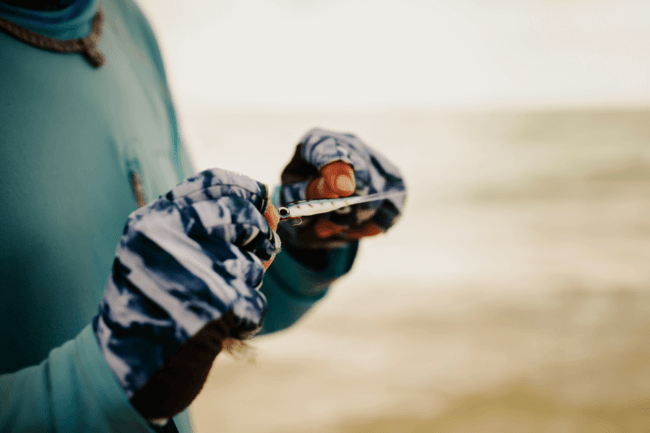
We parked on the bridge that spanned the river to get a sense of our surroundings and look down into the water for the first time. Our eyes were promptly greeted by a 12-foot crocodile basking in the sun.
“Oh, that’s the little guy,” said Rhett with a grin.
Sure enough, just at that moment, a much larger croc swam by. Although moderately terrified, we couldn’t help but think that if you told us years ago we’d be fly fishing the salt in Mexico and observing wild crocodiles, we’d have called you crazy.
The bridge is a good place to see wildlife, but we also spotted cruising bonefish. Having never caught, let alone seen a bonefish, thoughts quickly changed from croc paranoia to landing fish.
It was a short walk through the mangroves along a worn path to the mouth of the river where it opened onto the beach. We came out from the mangroves and made our way to the beach to set up our base camp for the day. Although not entirely necessary, it’s recommended to have a shady spot to take breaks from the sun and heat. It’s an enjoyable day, but you do walk a lot, so have a spot to chill out. We put our coolers down as Rhett explained how the fishing would go.
There are two ways to approach fishing the beach at Boca Paila. For the snook and larger bonefish we’d be patrolling the beach, walking the coastline and spotting fish that were coming in to feed on baitfish. High sun makes spotting easier, so in the morning it can be more effective to target the larger jack crevalle.
The unique aspect of fishing Boca Paila, as Rhett explained, is the opportunity to fish for cruising jacks. The current from the river spilling into the ocean has created a cut in the sand between the beach and a large but shallow sandbar roughly 9 to 12 meters (30 to 40 feet) out from the beach. To fish it effectively, you wade out past the cut and onto the sandbar. From here, waves roll over the sandbar and create a surf break. Those waves are what the jack, ride like surfers, over the shallows, and into the river mouth to aggressively destroy any snack that gets in front of them. What makes things more exciting is that you can target the surfing jacks with large poppers. The whole thing is a very visual experience. All this is being explained to us at 7 a.m. as the sun rises over Boca Paila on our first day, over what Rhett refers to as a “adult breakfast beverage.”
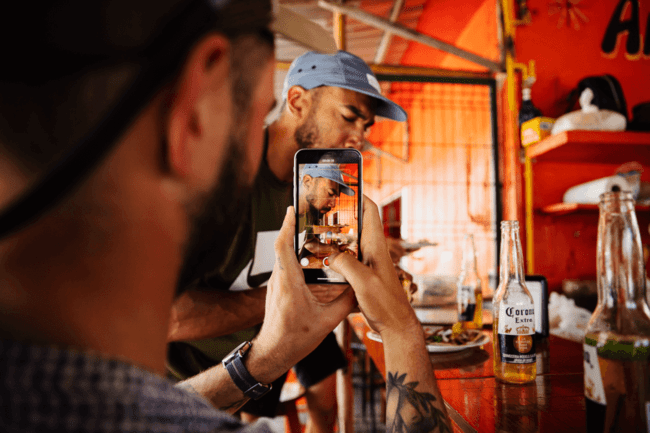
Our conversation was cut short as we started to see nervous water, baitfish breaking the surface, and bonefish tails not 5 meters (15 feet) from where we stood at the edge of the beach. Rods were rigged, knots were tied, and we took our first steps into the ocean. After walking through the mangroves, wading out into the water, with the warm salt-stained wind blowing in our faces, was an immersive fishing experience that’s impossible to forget.
The light was at an angle where we couldn’t exactly spot fish, especially with rookie saltwater eyes, but we did see shadows in the water close to shore. Rhett instructed us to get our lines going. Yilma, one of the So Fly podcast hosts, took a the first cast at the edge of the nervous water and—boom!—was into a bonefish. Moments later, my fly hit the water and was massacred by my very first bonefish. Within moments, these two Canadians hooked and landed a species they’ve spent years dreaming about.
As the sun climbed, we saw that we weren’t casting to a few random bonefish but rather a sizeable school that moved in to crash baitfish being forced out by the current. They pushed in, fed, and pushed out in a methodical circular pattern. We deciphered the school’s feeding pattern and made casts every time the school moved into the river mouth. This happened at 20-minute intervals. By the end of the day we had landed somewhere north of 30 bonefish, all in the 1- to 4-pound range, and all within about 10 meters (30 feet) of our cooler. To say this was “one of those days” is an understatement. We laughed like kids, we chatted with Rhett and learned more about his life, we landed fish, and I almost—almost—completely forget about our luggage.
We ended our day and walked back through the mangroves to the cars and decide to celebrate over tacos. As we drove back to Tulum, we received word that our luggage had arrived—it had been held up in Toronto by Customs—and all was well. But our troubles, preoccupied minds, and anxiety had melted away long before that. Surrounded by good food and great company, we laughed and looked forward to the week ahead in the southern Yucatán.
To learn more about So Fly’s trip to the Sian Ka’an and Boca Paila head to www.sofly.ca/podcasts for a full podcast recap of their trip.
@thesoflycrew
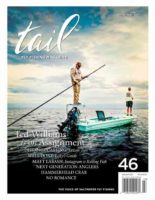 SUBSCRIBE TO TAIL FLY FISHING MAGAZINE
SUBSCRIBE TO TAIL FLY FISHING MAGAZINE
Related Post

